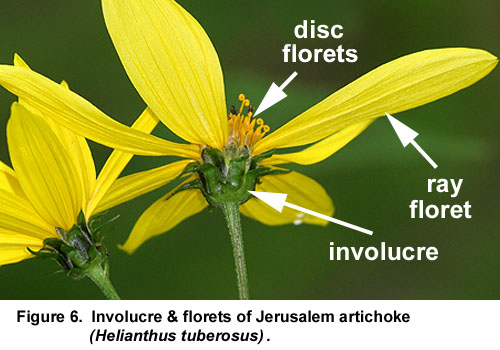 |
|
Included in this key are only those species found in the area surveyed at Buttermilk Falls State Park. |
||||
|
. ** Plant
Finder ** |
||||
| .Home | Continue to Plant Finder | Back to Part 1 | ||
|
A
crash
course
in
Composite |
||||
|
|
|
|
|
|
The composite species most similar to dandelions can be challending to identify because they all share several characteristics: milky sap, yellow ligules (florets) with 5 minute teeth at the tips, and bisexuality. That means we have to pay attention to another part of the flower head called the involucre. The involucre includes the collection of small leaf-like bracts that underlies and surrounds the collection of florets, and appears to hold the entire flower head together. Involucres are very important in the study of composite family plants in general, for they exhibit a great deal of variability that helps us to distinguish between very similar species. Figure 6 (below) shows the involucre of Jerusalem artichoke (Helianthus tuberosus), one of our sunflower species. |
|
 |
|
|
x |
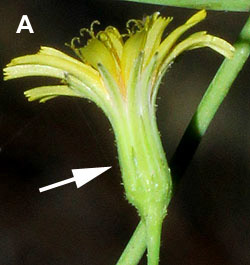 |
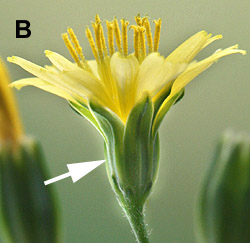 |
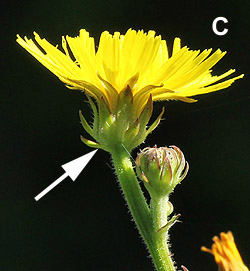 |
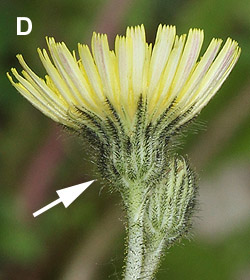 |
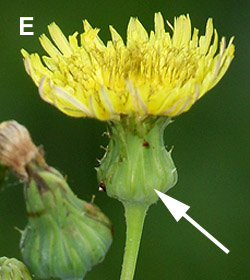 |
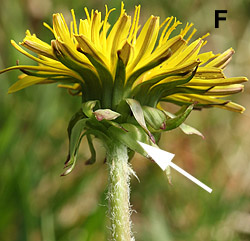 |
|
. |
||
| A | Panicled hawkweed | Hieracium paniculatum | ||
| B | Nipplewort | Lapsana communis | ||
| C | Oxtongue | Picris hieracioides | ||
| D | Whip hawkweed | Pilosella flagellaris | ||
| E | Spiny-leaved sow-thistle | Sonchus asper | ||
| F | Common dandelion | Taraxacum officinale | ||
| . |
| . |
. Aren't leaves important identifiers for this group of species? Yes and no. If you learn what types of leaves are typically associated with certain genera, you may be able to get closer to an identification. However, it will still not be easy to find an exact identification in many cases, unless you can view the involucre, and even then, perhaps not. This is also true for me, even though I know these species well. To complicate matters more, there is a degree of hybridization between some of these species, and that also affects their leaf characters. . |
|
|
>>> Continue to Plant Finder <<< |
||
x
x
|
Images and text copyright Arieh Tal, 2017-2022. All rights reserved. ( Terms of Use ) |